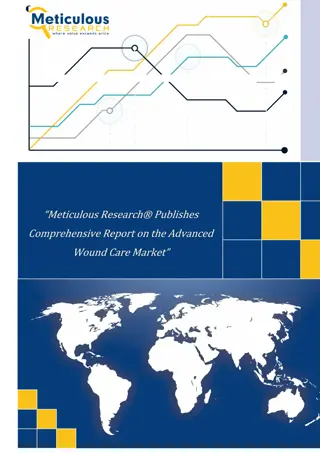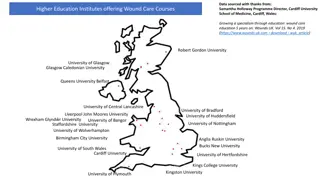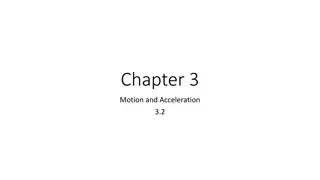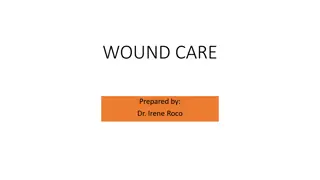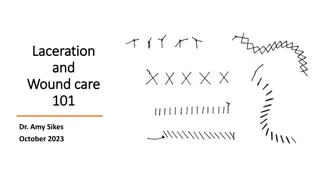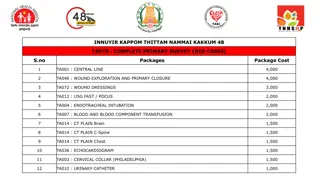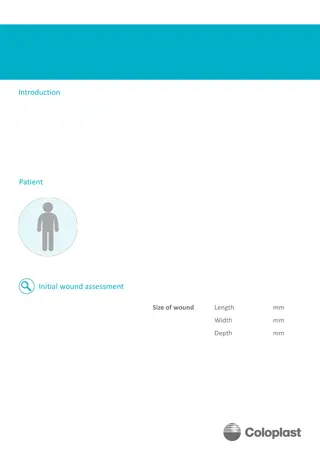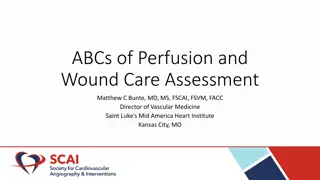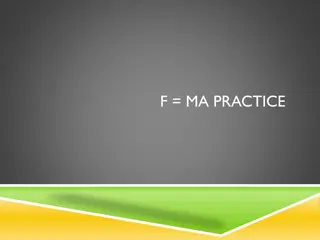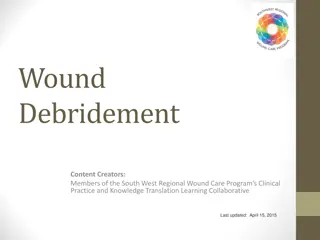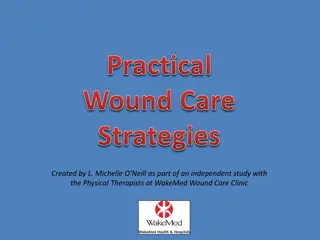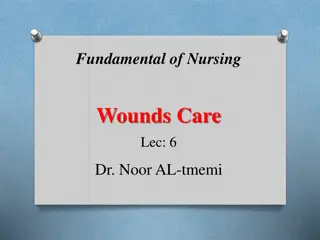Evolution of Wound Care: From Antiseptic Dressings to Acceleration Techniques
Explore the historical perspective, goals, factors affecting wound healing, nutrition's role, and strategies for accelerating wound healing. Learn about the mechanisms of wound injuries and the importance of a clean environment in wound care management.
Uploaded on Sep 17, 2024 | 0 Views
Download Presentation

Please find below an Image/Link to download the presentation.
The content on the website is provided AS IS for your information and personal use only. It may not be sold, licensed, or shared on other websites without obtaining consent from the author.If you encounter any issues during the download, it is possible that the publisher has removed the file from their server.
You are allowed to download the files provided on this website for personal or commercial use, subject to the condition that they are used lawfully. All files are the property of their respective owners.
The content on the website is provided AS IS for your information and personal use only. It may not be sold, licensed, or shared on other websites without obtaining consent from the author.
E N D
Presentation Transcript
Historical Perspective 1867 first antiseptic dressing 1900 true sterilization WW I nonadherent dressings WW II more absorptive dressings 1960 s and 70 s moisture 1980 s moisture acceptance
Goals of Wound Care Minimizing infective risks Removing dead and devitalized tissue Allowing for wound drainage Promoting wound epithelialization and contraction Tissue perfusion Adequate nutrition
Factors That Delay Wound Healing: Intrinsic Factors Extrinsic Factors
Factors That Delay Wound Healing: Intrinsic Wound infection - Bacterial count - Colonization VS infection - Assessment of infection Foreign bodies Adequacy of blood supply
Factors That Delay Wound Healing: Extrinsic Factors Smoking Diabetes Elderly Medication Malnutrition Obesity
Nutrition and Wound Healing Anabolic process Immune response Vitamins C, A, B6 B1, B2, zinc, and copper, fatty acids
Acceleration of Wound Healing Wound dressing Oxygenation Adequate nutrition Preparation of the wound Future
Three Healing Gestures Washing the wound Making plasters-herbs,oils and ointments Bandaging the wound
Mechanism Shearing (perpendicular division of tissue) Tearing (<90 degree angle) Compressive (perpendicular with ragged edges)
Environment Household generally clean , but not sterile Outdoor contaminated in varying degrees (the barn, industrial machinery) Bites (human, animal) highly contaminated
Modifying Factors Age of wound: Rule of Thumb +/ - 12 hr. Wound: Type (mechanism, sharp vs blunt object) Location and vascularity (face, scalp >12hr.?) Contamination Comorbid factors
Co morbid Factors Age Medical hx. anemia, nutrition, DM, PVD, ETOH, uremia, immuno- compromised Medications steroids, NSAIDS, anticoagulants, anti-neoplastics
Tetanus Status > 5yr. < 10yr. Hx. primary series, Need: toxoid > 10yr. Need: toxoid, homotet and toxoid in 60da. No primary series, Need:toxoid, homotet, and toxoid in 60da.
Wound Healing Neovascularization Inflammation Epithelialization Granulation Contraction Remodeling
Phases of Wound Healing Hemostasis 0-3 hours Inflammatory 0- 3 days Proliferation 3-21 days Maturation 21 days to 1.5 years
Preoperative Management Debridement & Irrigation Instrumentation Anesthesia Incision planning Patient consultation
Intraoperative Precautions Incision placement Undermine where necessary Meticulous hemostasis Dead space obliteration **Dermal closure** Suture type & placement Anti-tension taping of wound
Postoperative wound care Topical emollients for moisture Frequent cleaning with H2O2 Early dermabrasion of irregular wounds Avoidance of sun, water Steroid creams, retinoids, etc.
Goals of scar revision Flat scar, level with surrounding skin Good color match with local tissue Narrow Parallel to the patient s RSTL Absence of straight, unbroken lines
Neurovascular Pulses, capillary refill, motor/sensory Musculoskeletal Muscle, bone, tendon, joint Foreign Body Visualize/x-ray (radiopaque materials)
PREPARATION Hair Clip, not shave Shaving increases incidence of wound infection NEVER SHAVE EYEBROWS
Irrigation Volume 250 1000 + ml. NS 60ml. Syringe and 16 18 ga. intracath
Irrigation Do not scrub wounds or use full strength Betadine for irrigation (denatures protein, impairs wound healing) 10 : 1 solution for irrigation or temporary dressing
Repair Sutures Act as splints Should be Passive Aim to Return Tissues to Original Position New preplanned Position
Sutures Immobilize Tissues to Allow Rapid healing Primary intention Less bleeding Reduced haematoma Reduced oedema Reduced discomfort Reduced risk of infection
Sutures May Aid haemostasis By direct vessel ligation By compression of vessel against bone edge By retaining a pack or dressing
Suture Needles Eyed Swaged Straight/Curved Large/Micro Taper/Spatula Round Bodied/Cutting/Reverse Cutting
Sutures Physical Properties Size Strength Elongation Elasticity Torsional Stiffness Flexibility Surface Capilliarity
Selection of Sutures How long is a suture to be responsible for wound strength? Is absolute fixation required? Is there a risk of infection? How does the choice of sutures affect the tissues?
Selection of Sutures How does the suture affect the healing process? What size of suture Is strong enough? Provides adequate fixation?
Suture Types Absorbable Organic Catgut Soft Plain Chromic Synthetic Polyglycolic Acid Dexon Polyglactin 910 Vicryl
Suture Types Non Absorbable Single Filament Nylon Multifilament Organic Silk Multifilament Metallic Stainless Steel Silver Multifilament with Sheath Polyamide Supramid
Biological Properties of Sutures Tissue Reaction depends on Material Organic > Synthetic Absorbable Materials Catgut Proteolytic absorbtion Vicryl Hydrolytic absorbtion Non Absorbable Natural but have considerable tissue reaction Synthetic have little tissue response
Suture Sterilization Gamma Radiation Cobalt 90 Electron Radiation Linear Accelerator Ethylene Oxide Gaseous Liquid
Suturing Techniques Continuous Subcuticular Blanket Stitch Over and Under Interlocking Purse String Interrupted Simple Mattress Vertical Horizontal
Suture Tying Techniques Hand Ties One Handed Two Handed Instrument Ties Minimise trauma by Delicate handling of tissues Not constricting tissues Avoidance of dead space Close but not over approximation of tissue edges
Anesthesia Lidocaine Inject in sub-q tissue ( 21 25ga. needle)
Anesthesia Lidocaine with epinephrine (if you must), but Never in digits, nose, ear, penis Skin Prep Betadine (not in wound) Always prep more area than you think you need
Primary suture, staples, glue Secondary granulation and re- epitheliazation Delayed primary closure closure after 48 72hr. Interrupted sutures in ED
DRESSINGS Dry sterile dressing avoid ointments(tend to macerate) Avoid tape on skin if possible Paint skin with tincture of benzoin if you must use tape
DRESSINGS Encircling dressing ( ACE) Do not wrap tightly Immobilization Excessive motion impairs wound healing Splinting may be necessary
Characteristics of Dressings Protect wound from bacteria and foreign material Absorb exudates Prevent compression to minimize edema an obliterate dead space
Dressings Be nonadherent to limit wound disruption Create a warm, moist occluded environment to maximize epithelialization and minimize pain Be esthetically attractive
Indications Contaminated wound Areas of marginal viability Wounds involving joints, open fractures All human bite wounds Most animal bite wounds Generally, wounds > 12hr. old
SPECIAL WOUNDS



